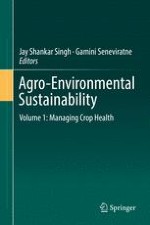2017 | OriginalPaper | Buchkapitel
12. Priming Host Defense Against Biotic Stress by Arbuscular Mycorrhizal Fungi
verfasst von : Supriya Gupta, Pankaj Rautela, Chandan Maharana, K. P. Singh
Erschienen in: Agro-Environmental Sustainability
Aktivieren Sie unsere intelligente Suche, um passende Fachinhalte oder Patente zu finden.
Wählen Sie Textabschnitte aus um mit Künstlicher Intelligenz passenden Patente zu finden. powered by
Markieren Sie Textabschnitte, um KI-gestützt weitere passende Inhalte zu finden. powered by
